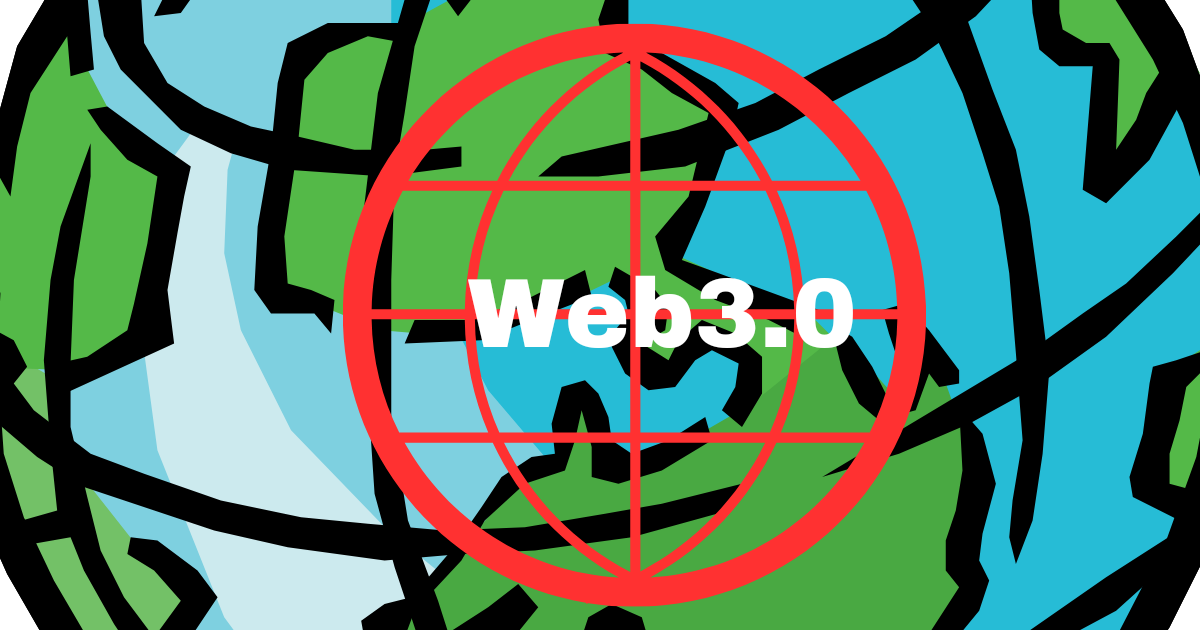Introduction
Web 3.0 and the Metaverse: A Deep Dive into the Future of the Internet
The internet has come a long way since its inception, evolving with each phase of its development. We’ve transitioned from the static web of the late ’90s to the dynamic and interactive Web 2.0, and now we stand at the cusp of another revolutionary transformation – Web 3.0 and the concept of the Metaverse. In this article, we’ll explore what Web 3.0 is, delve into the intriguing world of the Metaverse, and understand how these concepts work.

1. The Evolution of the Web:
The term “Web 3.0” is often used to describe the next phase of Internet development. It signifies a shift from the current state of the internet, Web 2.0, characterized by social media, interactive websites, and user-generated content.
2. Web 3.0 Defined:
Web 3.0, often referred to as the Semantic Web, is envisioned as an internet that understands and interprets information. It’s not just about connecting documents and people but about connecting concepts and data.
3. Semantic Web:
At the core of Web 3.0 is the Semantic Web, a concept developed by World Wide Web inventor Tim Berners-Lee. It aims to add meaning to the content on the web, making it machine-readable and interpretable by intelligent agents.
4. Decentralization:
One of the key features of Web 3.0 is decentralization. It moves away from the centralized model of Web 2.0 where large corporations dominate, to a more distributed architecture using Blockchain and other technologies.
5. Blockchain Technology:
Web 3.0 heavily relies on blockchain technology to create a trustless and decentralized environment. Blockchain ensures the integrity and security of data, transactions, and digital assets.
6. Smart Contracts:
Smart contracts are self-executing contracts with the terms of the agreement directly written into code. They enable automated, trustless transactions and are an integral part of Web 3.0.
7. Interoperability:
In Web 3.0, systems and applications are designed to be interoperable, allowing data and services to seamlessly flow between different platforms and devices.
8. Data Ownership:
Web 3.0 empowers individuals to have greater control over their data, deciding who accesses it and for what purposes. This shift toward data ownership is in stark contrast to the data privacy concerns of Web 2.0.
9. Artificial Intelligence (AI):
AI plays a central role in Web 3.0, enabling machines to understand, process, and respond to the vast amounts of data available on the web.
10. Enhanced User Experience:
Web 3.0 promises a more personalized and efficient online experience by tailoring content and services to individual user preferences.
11. Metaverse Introduction:
While Web 3.0 is reshaping the internet, the concept of the Metaverse is pushing the boundaries of our digital existence even further.
12. What is the Metaverse?
The Metaverse is a virtual shared space where users can interact with each other and digital environments in real time. It combines augmented reality (AR), virtual reality (VR), and 3D technology to create immersive experiences.
13. Digital Universe:
Imagine the Metaverse as a digital universe consisting of multiple interconnected virtual worlds, where users can explore, socialize, work, and even play in various immersive environments.
14. Metaverse Components:
The Metaverse includes various elements like virtual reality headsets, augmented reality glasses, haptic feedback devices, and spatial computing technologies.
15. Social Interaction:
A significant aspect of the Metaverse is social interaction. Users can engage with others, attend events, and even build virtual communities in ways that closely mimic real-life interactions.
16. Economic Opportunities:
In the Metaverse, there are real economic opportunities. Users can buy, sell, and trade virtual assets and even own virtual real estate, creating a new digital economy.
17. Decentralization in the Metaverse:
Similar to Web 3.0, decentralization is also a critical concept in the Metaverse. It reduces the control of large corporations over the virtual space and fosters user-driven innovation.
18. Metaverse Challenges:
The Metaverse faces challenges related to privacy, security, and the potential for addiction. As users spend more time in digital worlds, there are concerns about the impact on mental health.
19. Web 3.0 and the Metaverse Integration:
Web 3.0 and the Metaverse are not separate entities but are closely connected. Web 3.0 technologies underpin the decentralized infrastructure of the Metaverse.
20. The Future:
The future of the internet lies in the convergence of Web 3.0 and the Metaverse. Together, they promise a more intelligent, decentralized, and immersive online experience, revolutionizing the way we live, work, and play in the digital realm. Web 3 and
Web 3 and Metaverse project
here are some notable Web3 and Metaverse projects. Please keep in mind that the cryptocurrency and blockchain space is highly dynamic, and new projects constantly emerge. Additionally, the Metaverse space has expanded significantly with developments related to virtual reality (VR) and blockchain technology. To get the most current information, I recommend checking the latest news and sources specific to these areas.
(A) Web3 Projects:
(1) Ethereum (ETH):
The second-largest cryptocurrency by market capitalization, Etherium is at the forefront of the Web3 movement, with a focus on smart contracts and decentralized applications (dApps).
Polkadot (DOT) –
- A multi-chain network that connects different blockchains, enabling them to interoperate and share information.
Chainlink (LINK) –
- Provides decentralized oracles to enable smart contracts to interact with real-world data.
- Filecoin (FIL) – A decentralized data storage network that allows users to buy and sell storage space.
- IPFS (InterPlanetary File System) – A distributed file system that aims to make the web faster, safer, and more open.
- Arweave (AR) – Offers permanent and low-cost data storage for Web3 applications.
- Tezos (XTZ) – A blockchain platform that focuses on self-amendment and on-chain governance.
- NEAR Protocol (NEAR) – A scalable blockchain platform for building decentralized applications.
Metaverse Projects:
- Decentraland (MANA) – A virtual world built on the Ethereum blockchain where users can buy, sell, and develop virtual real estate.
- The Sandbox (SAND) – A platform that allows users to create, own, and monetize gaming experiences in a virtual world.
- CryptoVoxels (CV) – A blockchain-based virtual world where users can buy and develop virtual properties.
- Somnium Space (CUBE) – An open, social VR platform that merges the physical and virtual worlds.
- Axi Infinity (AXS) – A blockchain-based online game that involves the collection and trading of fantasy creatures called Axies.
- VRChat – A social VR platform that allows users to create, share, and explore worlds.
- Mattereum – A project aiming to bridge the physical and digital worlds by linking legal contracts to physical assets using blockchain technology.
Please note that the Metaverse space has evolved significantly, and new projects have likely emerged since my last update. To get the most current information on Web3 and Metaverse projects, consider exploring specialized news sources and forums in the cryptocurrency and virtual reality sectors.
Conclusion
In conclusion, Web 3.0 and the Metaverse are shaping the next era of the internet, promising a more intelligent, decentralized, and immersive online experience. The Semantic Web, blockchain technology, and decentralization are fundamental to Web 3.0, while the Metaverse creates a virtual universe of shared spaces and experiences. As these concepts continue to evolve, they will undoubtedly redefine our relationship with the digital world. The fusion of Web 3.0 and the Metaverse presents a future where the Internet is more than just a tool; it becomes a comprehensive, interconnected, and immersive digital existence. Is this conversation helpful so far?
Disclaimer :
Caution! Careful! Careful! Any financial and crypto market information given on Cryptomenya is an article, written for informational purposes only and is not investment advice. The readers are further advised that Crypto products and NFTs are unregulated and can be highly risky. There are many ups and downs in the crypto coin market, so there is a constant fear of losing money, so whenever you invest, do your research or invest under the supervision of a well-informed person. For any reason, Cryptomenya.com will not be held liable for any financial loss incurred by investors.
